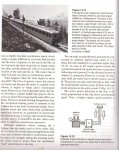But I haven't heard a theory that agrees with it. All I hear is you add a delay and the problem disappears.
If the problem was purely inductance in the circuit adding a delay would cure that.
If the problem was induction motors with caps added for PF correction, I would figure the caps could be supplying the reactive power and then the induction motors could be generating out of sync, and yes a delay long enough for the motors to stop would cure that too.
I don't care who said anything, or wrote something on paper, or what degree or license they have.
The statement was made that Induction motors being spun mechanically can generate power that may be "in sync" or may be "out of sync"
I want to know how a induction motor connected to nothing electrically and having it's rotor spun by way of mechanical input can generate any potential across it's armature leads.


